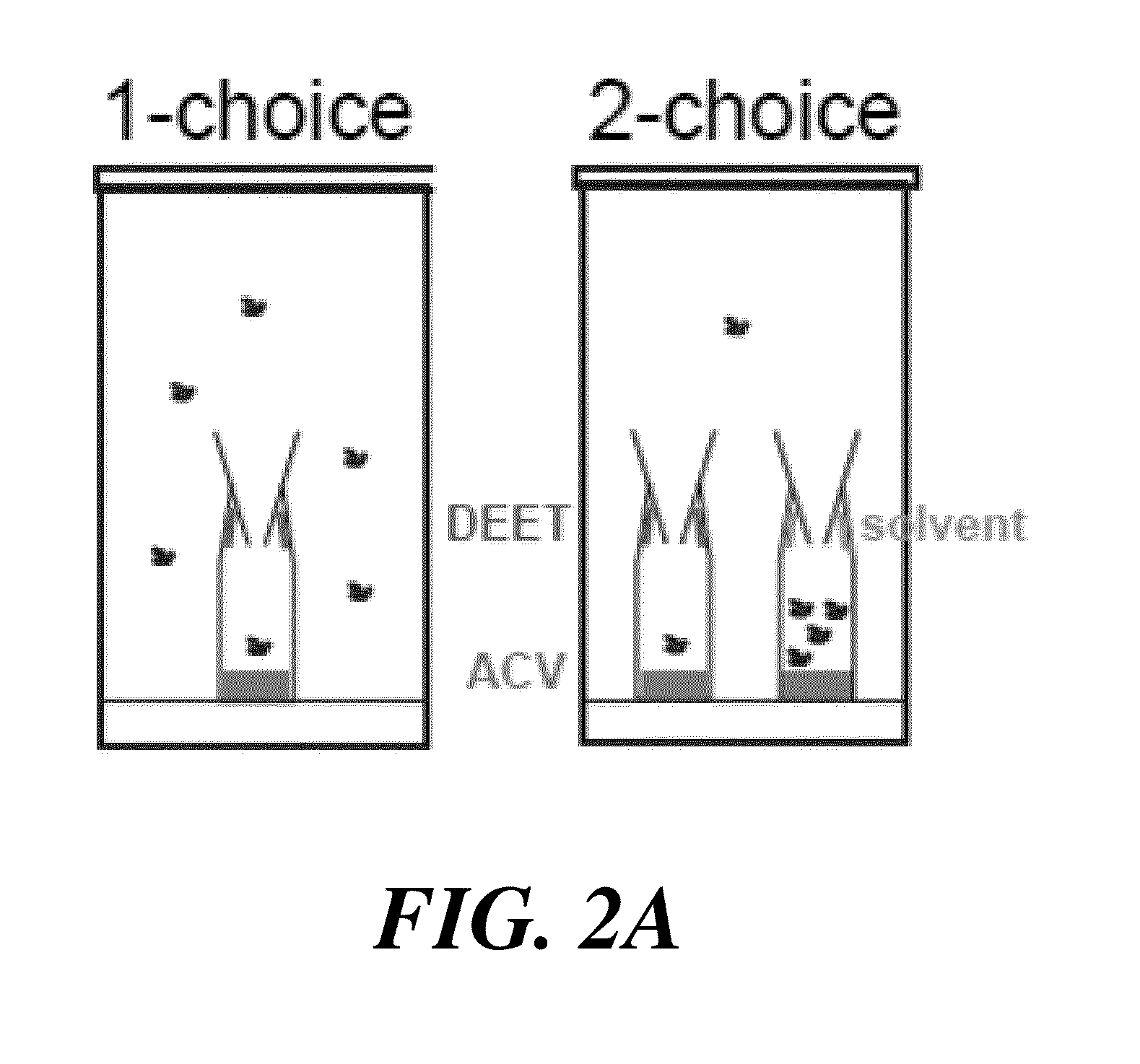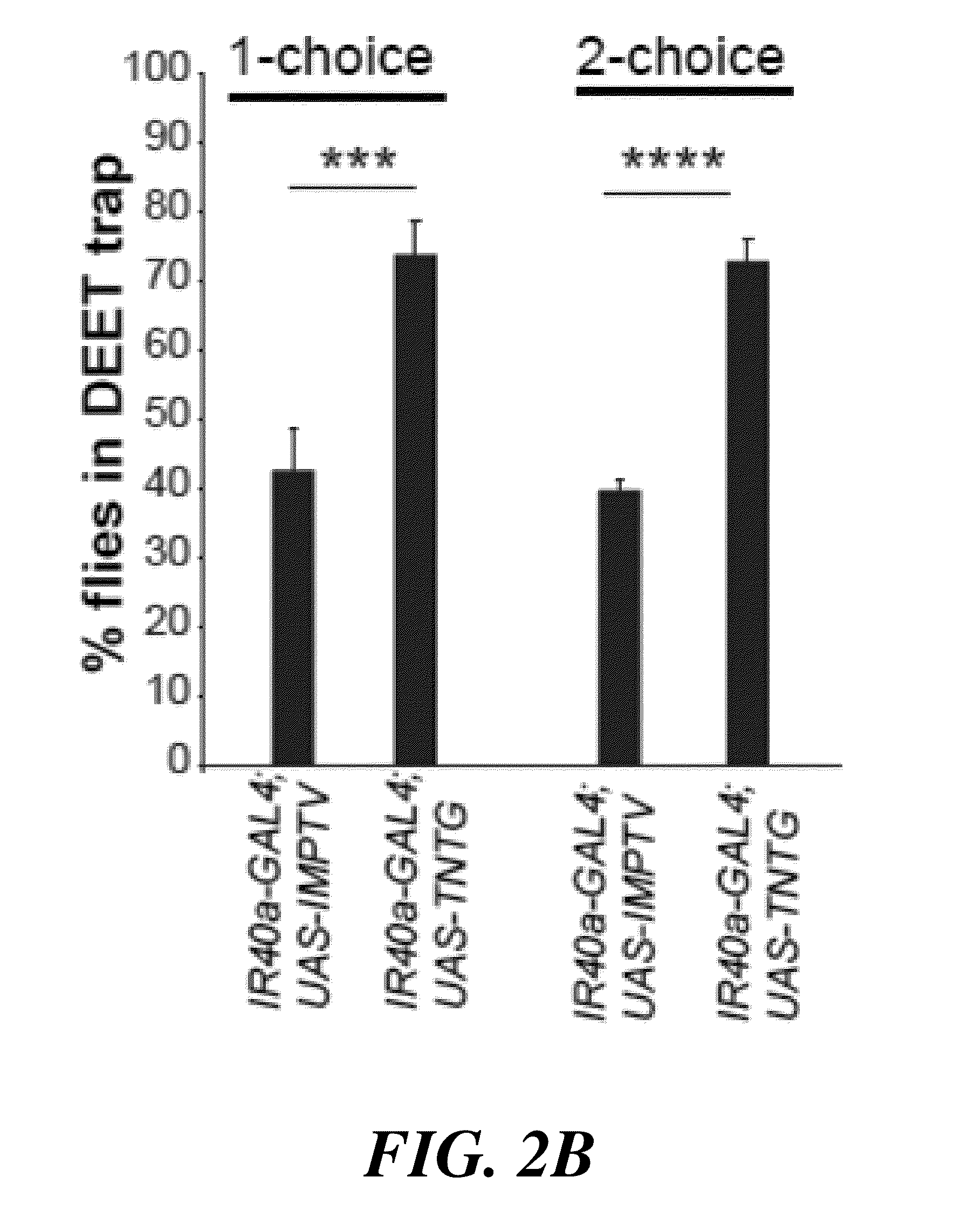Methods for identifying arthropod repellents based on modulation of specific ionotropic receptors, and compounds and compositions identified by such methods
a technology of specific ionotropic receptors and methods for identifying arthropods, which is applied in the field of arthropod repellents, can solve the problems of time and cost of development, and achieve the effects of increasing the activity of an ir40a receptor, increasing the activity of an ir93a receptor, and decreasing the activity of an ir40a receptor
- Summary
- Abstract
- Description
- Claims
- Application Information
AI Technical Summary
Benefits of technology
Problems solved by technology
Method used
Image
Examples
embodiment 1
2. The method of embodiment 1, wherein the at least one receptor is from an arthropod.
3. The method of embodiment 1 or 2, wherein the at least one receptor is from an insect.
4. The method of any one of embodiments 1 to 3, wherein the at least one receptor has at least 50% sequence identity to a polypeptide encoding a receptor from Drosophila melanogaster or an ortholog thereof.
5. The method of embodiment 4, wherein the ortholog of Drosophila melanogaster is selected from the group consisting of Aedes aegypti, Anopheles gambiae, Culex quinquefasciatus, Acyrthosiphon pisum, Bombyx mori, Tribolium castenium, Pediculus humanus, Ixodes scapularis, and Phlebotomus papatasi.
6. The method of any one of embodiments 1 to 5, wherein the compound is identified in an in vitro assay or in vivo assay.
7. The method of any one of embodiments 1 to 6, wherein the modulation of the activity of the at least one receptor is determined by measuring changes in one or more electrophysiological parameters, ...
embodiment 9
10. The method of embodiment 9, wherein modulation in the activity of the at least one receptor is an increase in the activity of the Ir40a receptor.
11. The method of embodiment 9 or 10, wherein the compound further modulates the activity of an Ir93a receptor.
12. The method of any one of embodiments 9 to 11, wherein the compound further modulates the activity of an Ir25a receptor.
13. The method of embodiment 9 or 10, wherein the compound further modulates the activity of an Ir93a receptor and an Ir25a receptor.
14. The method of any one of embodiments 1 to 7, wherein the receptor is an Ir93a receptor.
embodiment 14
15. The method of embodiment 14, wherein modulation in the activity of the receptor is an increase in the activity of the Ir93a receptor.
16. The method of embodiment 14 or 15, wherein the compound further modulates the activity of an Ir25a receptor.
17. A method of identifying a compound that is a repellent for at least one arthropod species, comprising:[0113]a) contacting at least one receptor or a receptor-expressing neuron comprising at least one receptor with a candidate compound, wherein the at least one receptor is selected from the group consisting of an Ir40a receptor, an Ir93a receptor, and an Ir25a receptor;[0114]b) measuring the activity of the at least one receptor;[0115]c) comparing the activity of the at least one receptor after contact with the candidate compound to the activity of the at least one receptor in the absence of the candidate compound; and[0116]d) identifying a compound that is a repellent for at least one arthropod species by determining whether or not th...
PUM
 Login to View More
Login to View More Abstract
Description
Claims
Application Information
 Login to View More
Login to View More - R&D
- Intellectual Property
- Life Sciences
- Materials
- Tech Scout
- Unparalleled Data Quality
- Higher Quality Content
- 60% Fewer Hallucinations
Browse by: Latest US Patents, China's latest patents, Technical Efficacy Thesaurus, Application Domain, Technology Topic, Popular Technical Reports.
© 2025 PatSnap. All rights reserved.Legal|Privacy policy|Modern Slavery Act Transparency Statement|Sitemap|About US| Contact US: help@patsnap.com



